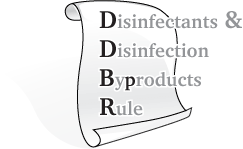Course Glossary
This shows the specialized terms used in EarthWise Academy. This section contains all the definitions used in the various course glossaries used by each course.
Currently sorted By creation date descending Sort chronologically: By last update | By creation date change to ascending
DenitrificationAn anoxic process that occurs when nitrite or nitrate ions are reduced to nitrogen gas and nitrogen bubbles are formed as a result of this process.
|
DBTDBT - Design Basis Threat Description of a specific adversary and mode of attack that has a degree of likelihood of occurring.
|
DBPs
|
DBP Rule
DBP Rule - Disinfectants and Disinfection Byproducts Rule
|
D Sampling SitesRepresentative sites within the distribution system.
|
D SampleSample collected from the distribution system.
|
CWSCWS - Community Water System
|
CCTCCT - Corrosion Control Treatment Water treatment that minimizes the lead and copper concentrations at users' taps while ensuring that the treatment does not cause the system to violate any primary maximum contaminant level.
|
CCRCCR -Consumer Confidence Report An annual water quality report that community water systems deliver to their customers.
|
cBODcBOD (Carbonaceous BOD) The stage of decomposition that occurs in biological treatment processes when aerobic bacteria, using DO, change carbon compounds to carbon dioxide; cBOD is sometimes referred to as "first-stage BOD" because the microorganisms attack organic or carbon compounds first. (Nitrogen compounds are targeted second, sometimes referred to as nBOD or "second stage BOD.")
|

